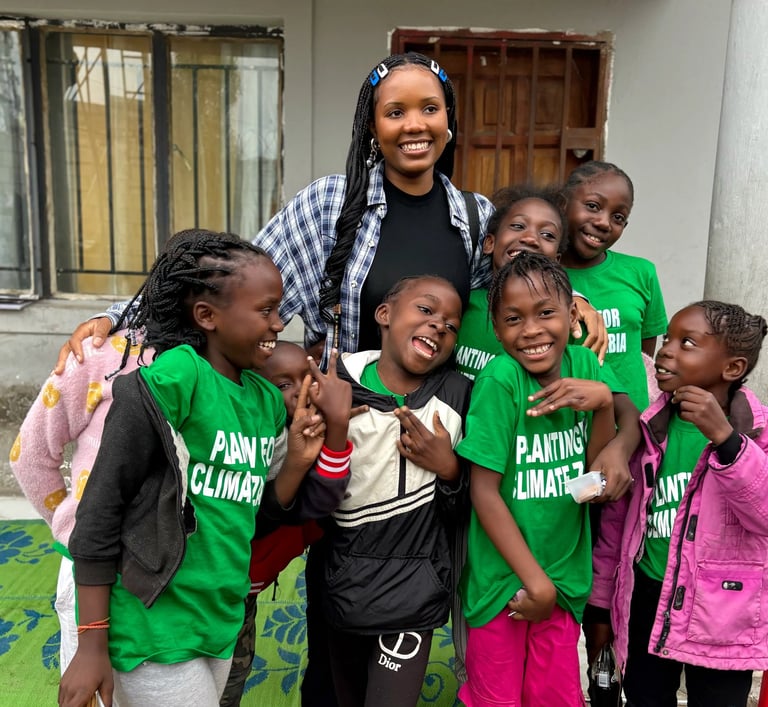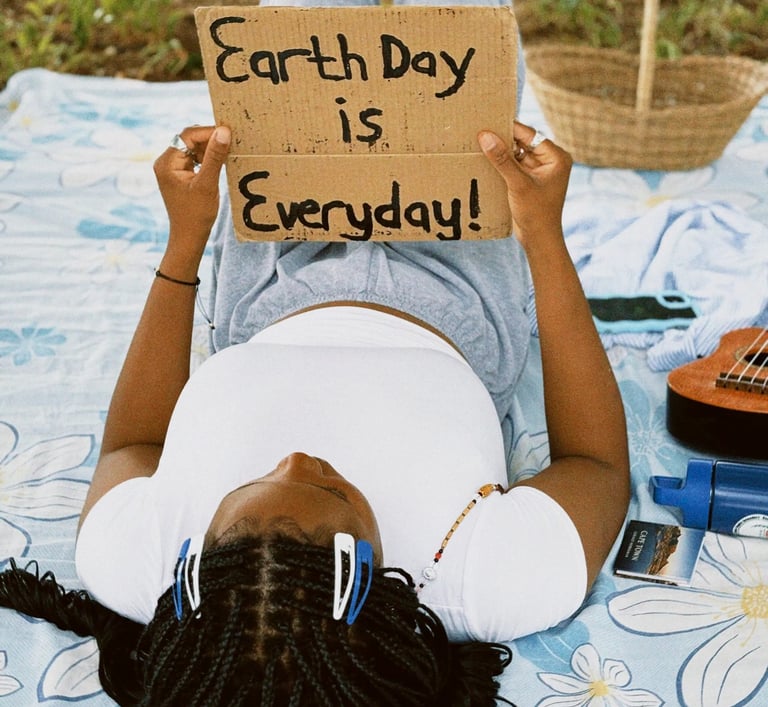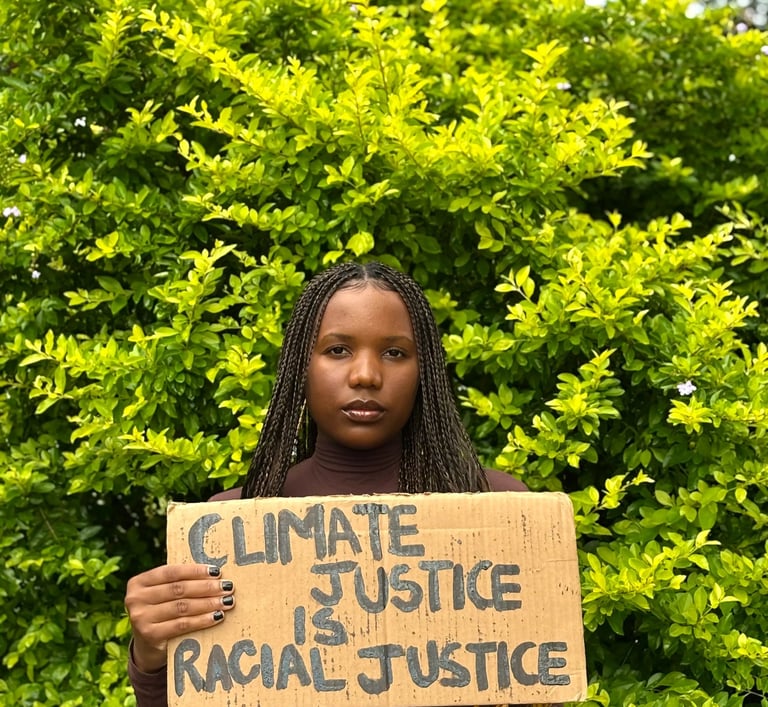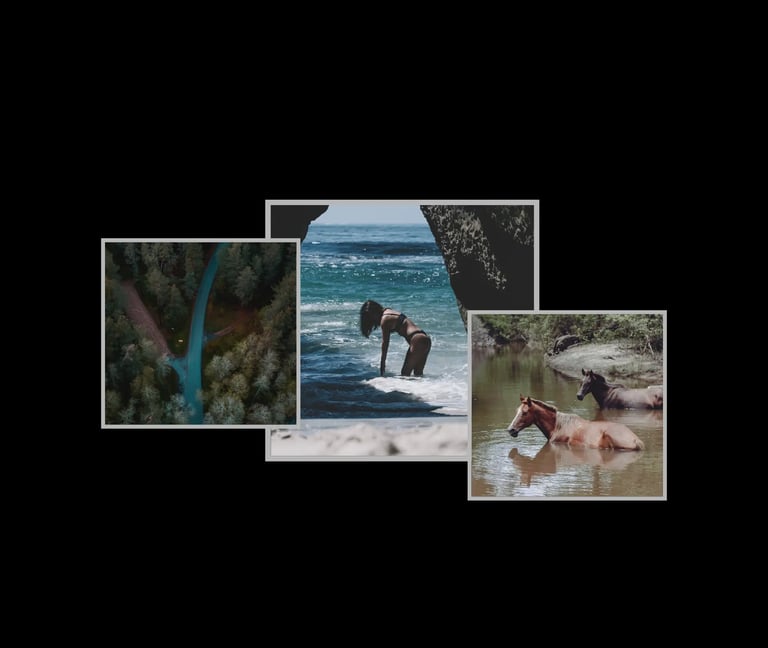Rooted in Hope: Veronica’s Journey Toward Climate Justice
PEOPLE & STORIES
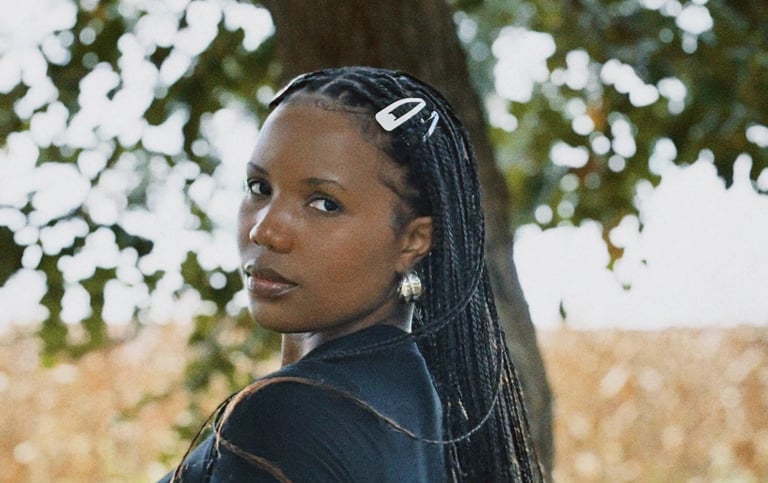

Name: Veronica Mulenga
Title/Profession: Climate Justice Activist & Educator
Based in: Zambia
Instagram: @veronicamulenga_
Known for: Veronica is known for her passionate advocacy for climate justice and her work in making climate education accessible and relatable, especially for young people in the Global South.
In the heart of Zambia, where the impacts of climate change are increasingly visible but often underrepresented, Veronica’s voice rises with clarity and conviction. Her journey into climate justice began with a flood—not just of water, but of awareness. What started as a personal quest to understand the forces reshaping her environment has grown into a powerful mission to educate, advocate, and inspire. In this candid interview, Veronica shares what fuels her work, the challenges of climate education, and how even small actions can ripple into meaningful change. Her story is one of resilience, purpose, and the unwavering belief that a just and sustainable future is possible for all.
1. What originally sparked your passion for climate justice—and what keeps you going today?
In 2015, Zambia experienced severe floods. At the time, I didn’t realize it was a sign of the climate crisis. Learning this on my own made me see how hidden and unequal the crisis is, especially for countries in the Global South. That’s why climate education matters so much to me. As I continued learning, I felt a deep responsibility to speak up. What keeps me going is the hope for a just and sustainable future.
2. What do you see as the biggest barriers to climate education today—and how can we overcome them?
One of the biggest barriers to climate education in Zambia is that it’s not part of the national curriculum, so many young people grow up unaware of the climate crisis or how it affects their lives and communities. Even when information is available, it’s often too technical or disconnected from local realities. To overcome this, we need to integrate climate education into our school system, train teachers, and use storytelling and real-life examples from our communities to make it relatable and easy to understand.
3. How can young people get involved in climate justice, especially in regions where resources or platforms are limited?
They can start by learning about the climate crisis and how it affects their own communities. Even in places with limited resources, they can organize cleanups, start school clubs, use social media to raise awareness, or join local and global movements. Collaboration, creativity, and community are powerful tools—and even without big platforms, small everyday actions can lead to big change.
4. What does a typical day look like for you as an activist and educator?
A typical day for me involves a mix of planning actions, researching, creating content for climate education, preparing for workshops, and attending meetings—mostly focused on environmental issues. Every day is different, but it’s all rooted in the goal of educating, empowering, and pushing for climate justice. I also make time for myself and enjoy my own hobbies. Activism is a big part of my life, but I’m also just a regular person trying to find balance.
5. What has been the most meaningful or unexpected response you've received from your advocacy work?
One of the most meaningful responses has been hearing that someone joined the climate movement or made a change in their life because of something I said or shared. Whether it’s a message, a conversation, or someone telling me they learned something new, it reminds me that the work I’m doing matters.
6. What does living sustainably mean to you on a personal level?
Living sustainably, to me, means doing the best I can with what I have. It’s not about perfection, but about making mindful choices. I don’t always get it right—I make mistakes and probably always will—but I keep trying. The system isn’t built for a sustainable lifestyle, so it’s really about doing what you can and staying committed to progress.
7. How has social media helped amplify your message—and what are the challenges that come with it?
Social media has helped amplify my message by allowing me to reach people beyond my immediate community. It’s a powerful tool for education, storytelling, and connecting with others in the climate movement. But most of the real work still happens offline. One challenge is that social media can sometimes make activism look like an aesthetic. It’s a great tool, but it’s just one part of the bigger picture.
8. Who or what continues to inspire your work as a climate justice advocate?
What inspires me most is the strength of the communities on the frontlines, the resilience of our people, and the legacy of those who came before us. I’m inspired by the fight for justice itself—by knowing that we are part of something bigger, and that our actions today can help create a better present and future for people and the planet.
9. What does success look like for you, both personally and in your mission?
For me, success is about making a tangible impact—whether that’s seeing more people engaged in climate action, educating others, or watching climate justice become integrated into policies and education systems. Personally, success means continuing to grow, unlearn, stay grounded in my values, and build a legacy of change. It’s not about perfection, but about progress and knowing that my efforts are helping to build a more just and sustainable world.
10. What small but powerful action would you encourage everyone to take today?
One small but powerful action I’d encourage everyone to take today is to learn something new about the climate crisis—whether it’s reading an article, watching a documentary, or talking to someone about how the climate crisis is affecting our world. Education is the first step toward action, and the more we know, the more we can do.
